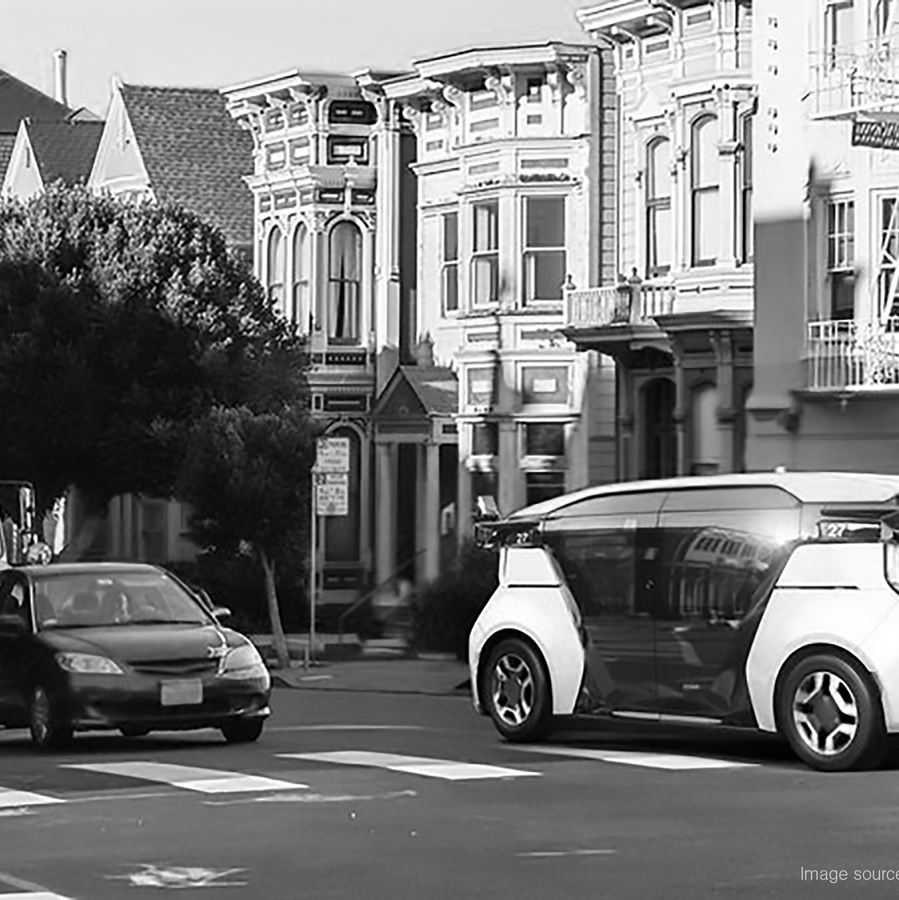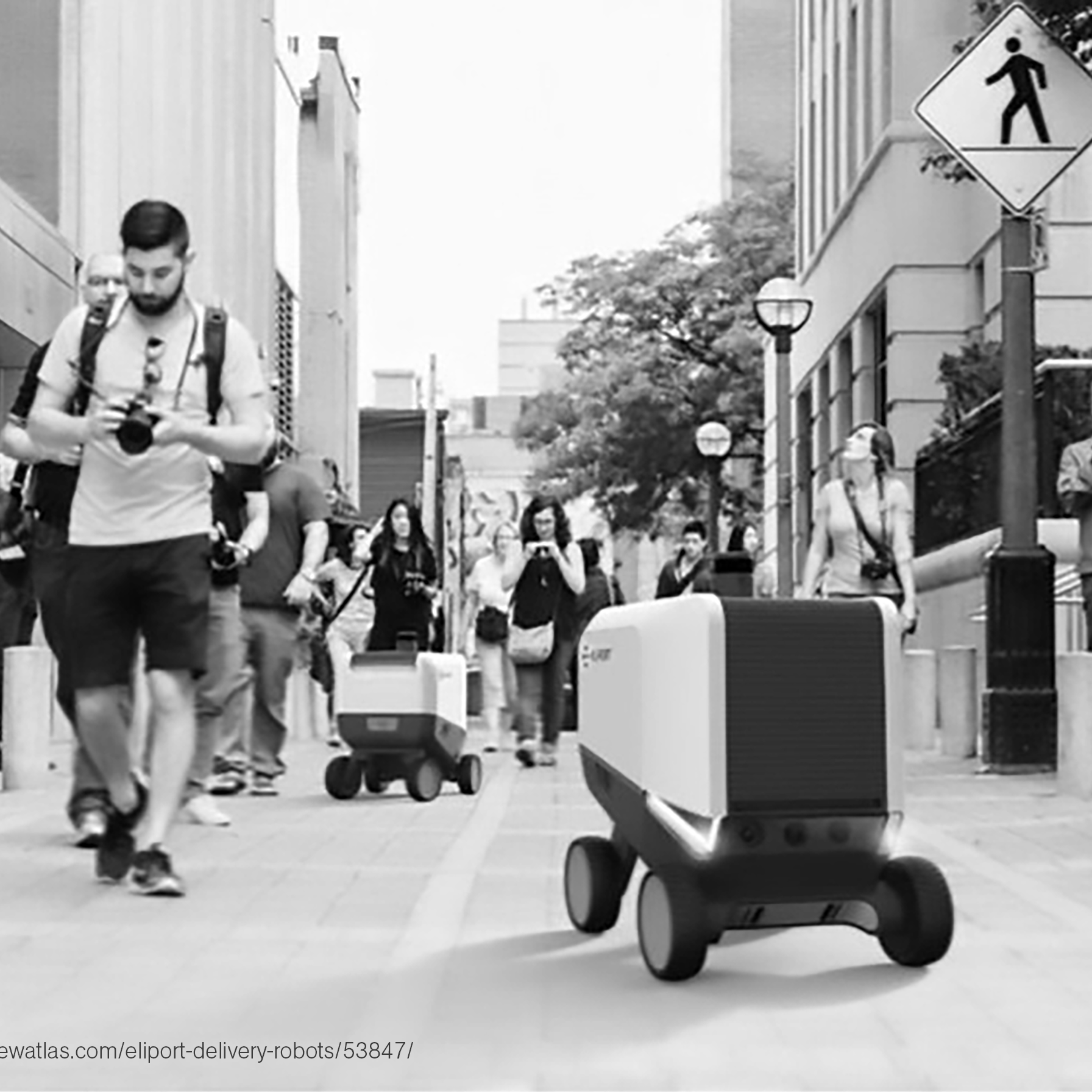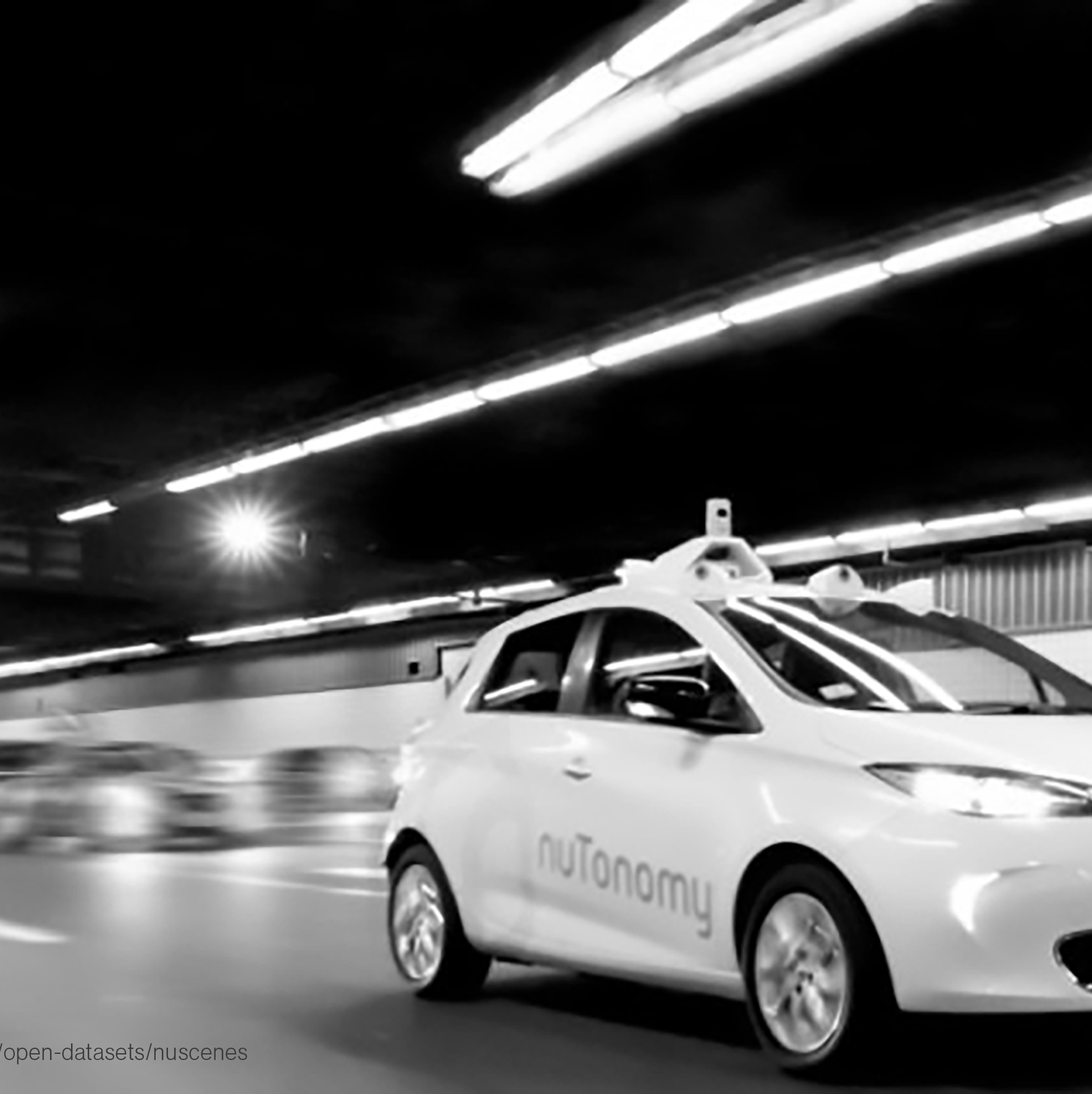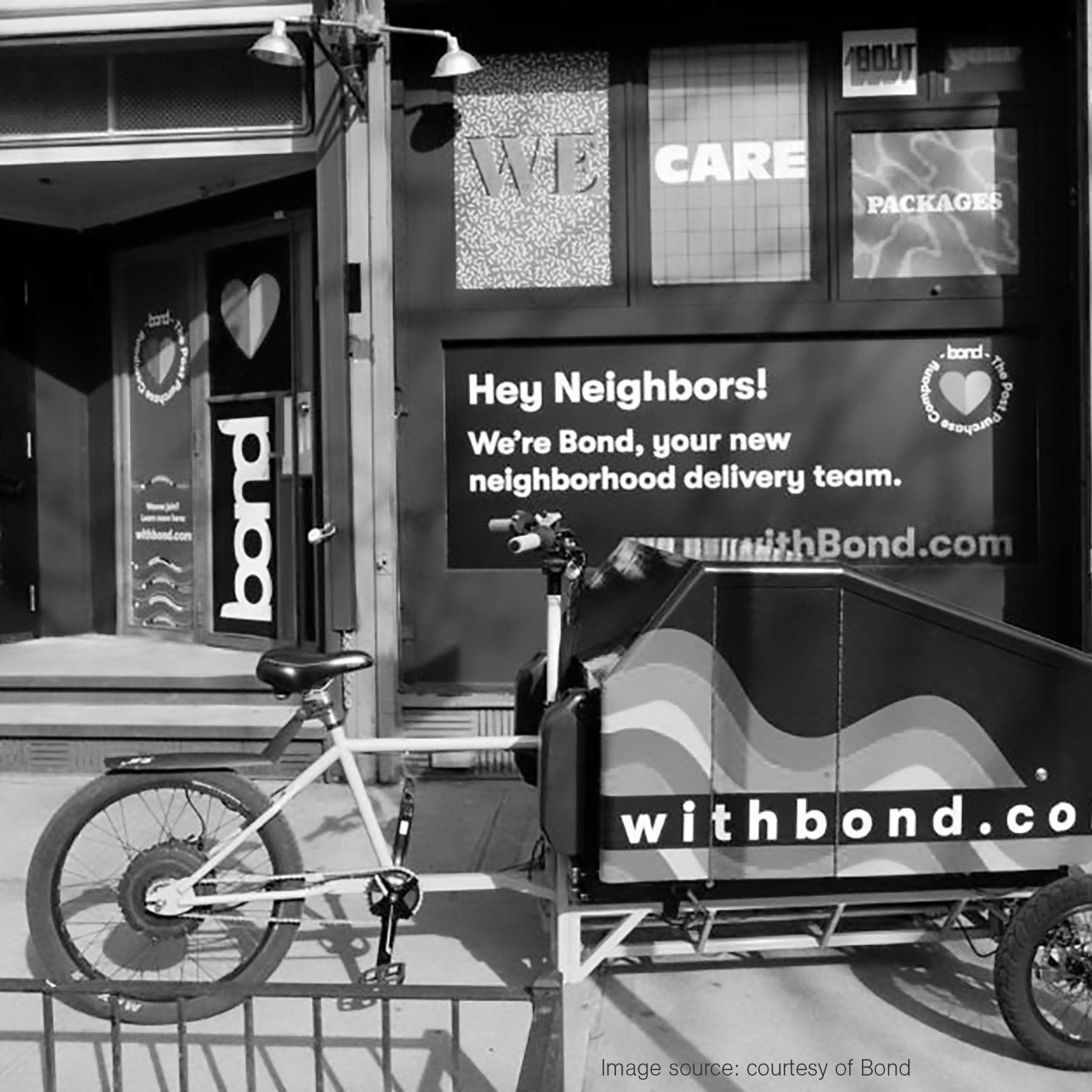
Industrial, Logistics
Future of Warehouse
The design of warehouse and logistic centers is speculated to undergo a vertical evolution. As Autonomous Mobile Robots are implemented within warehouses and logistic centers they can take over tasks that require heavy lifting which creates the potential for warehouses to increase their verticality. This is likely to trend as land for industrial property close to urban settings becomes more and more scarce.

Logistics, Commercial
Mobile Office
In cooperation with GM (2016) and Honda Motor Co (2018), Cruise LLC, an American self-driving car company headquartered in San Francisco, developed the Cruise Origin, a modular design of an autonomous vehicle intended for urban ride-sharing services. This case study explores how the reconfiguration of vehicle design for fully-autonomous cars could introduce the mobile office as an alternative to traditional office space.

Logistics, Residential
Last-Mile Delivery
Deliveries within cities and urban areas generally constitute the majority of the last-mile section of goods transportation. This is an area as part of the supply chain where autonomous technology is prime to tackle the challenges of the last mile delivery which at times exceed 50% of the supply chain costs. Several start-ups for Autonomous Ground Vehicles (AGVs) have been targeting this last mile delivery to complete the final piece of the Business to Consumer segment.

Industrial, Parking, Logistics, Commercial, Residential
Unparking
As a response to the increasing levels of traffic congestion, in 2015 the Singapore government launched the Sustainable Singapore Blueprint (SSB) which had five strategic thrusts to build a sustainable city, and one of the key elements was car lite Singapore. Thus, SSB has focused on shifting mobility to walking, biking, and public transportation.

Industrial, Logistics
Micro / Nano Distribution Center
With a higher demand by consumers for next day / same day delivery there is likely to be a proliferation of smaller distribution centers in urban settings. Termed nano or micro distribution centers these are much smaller logistic centers that range anywhere from 1,000 sqft (93 sqm) to 10,000 sqft (930 sqm). Fueled by the rapid growth of e-commerce and online sales throughout the Covid-19 pandemic, there is a stronger demand for faster deliveries which is forcing the overall supply chain to find time efficiencies.
